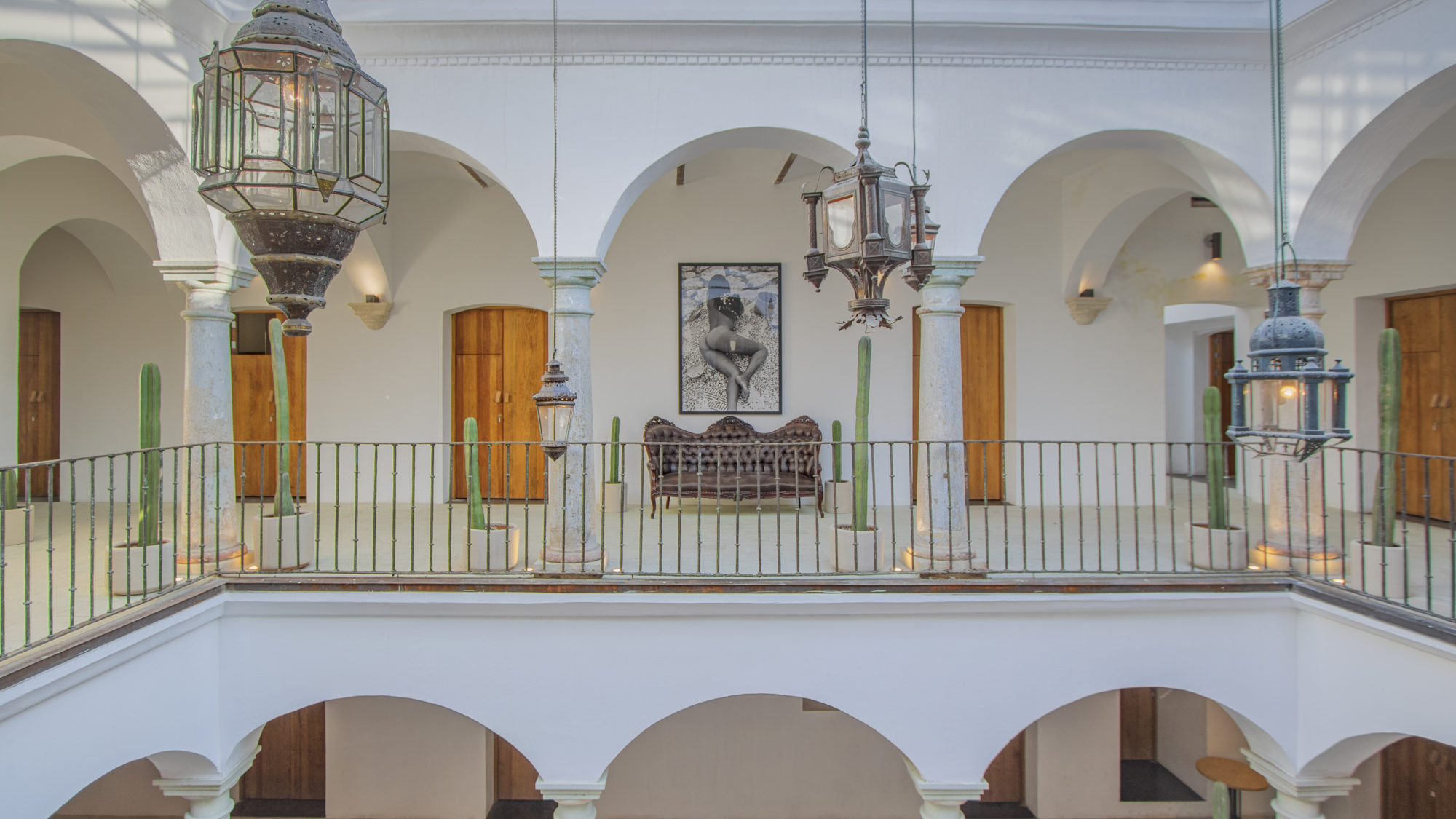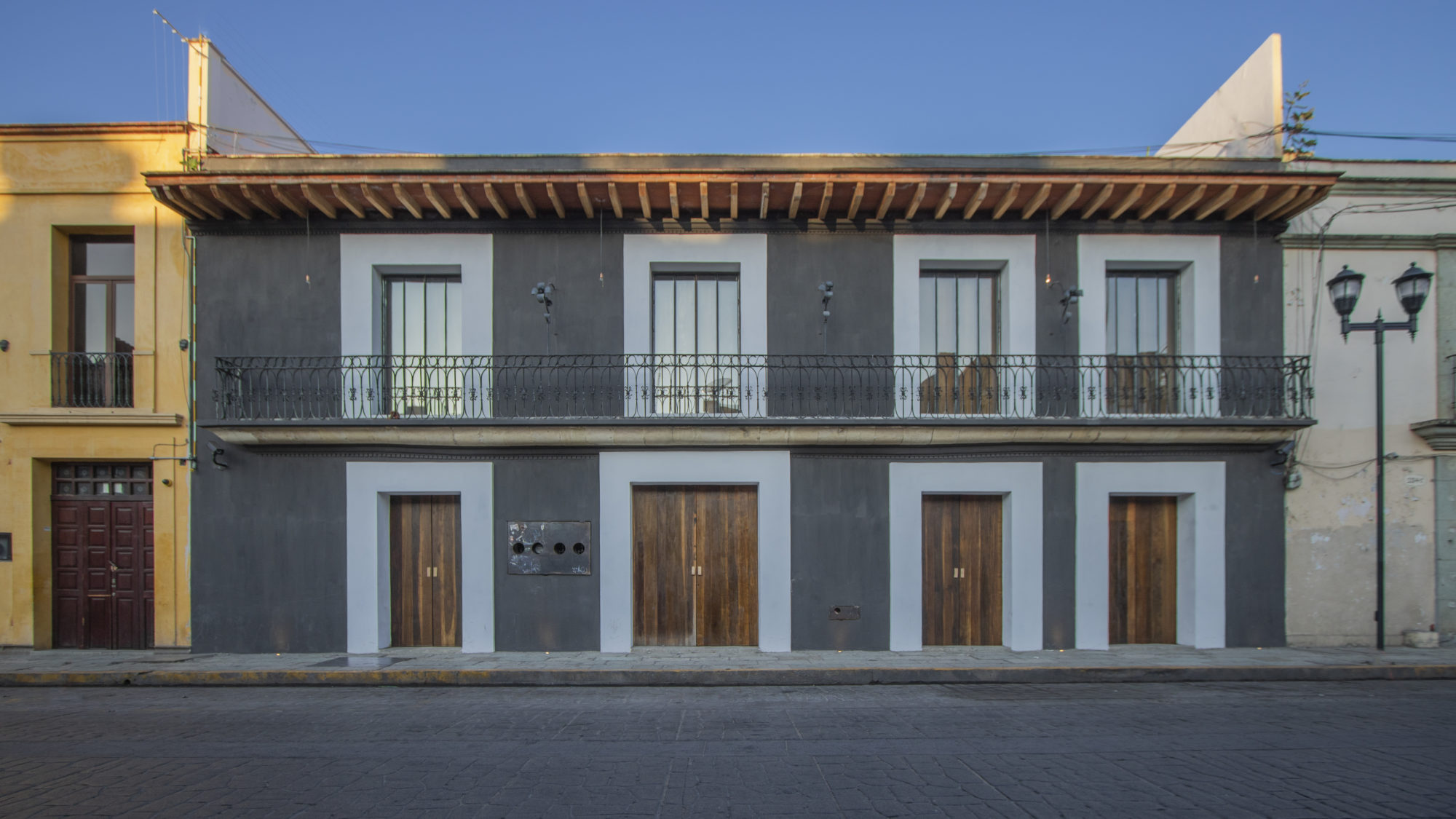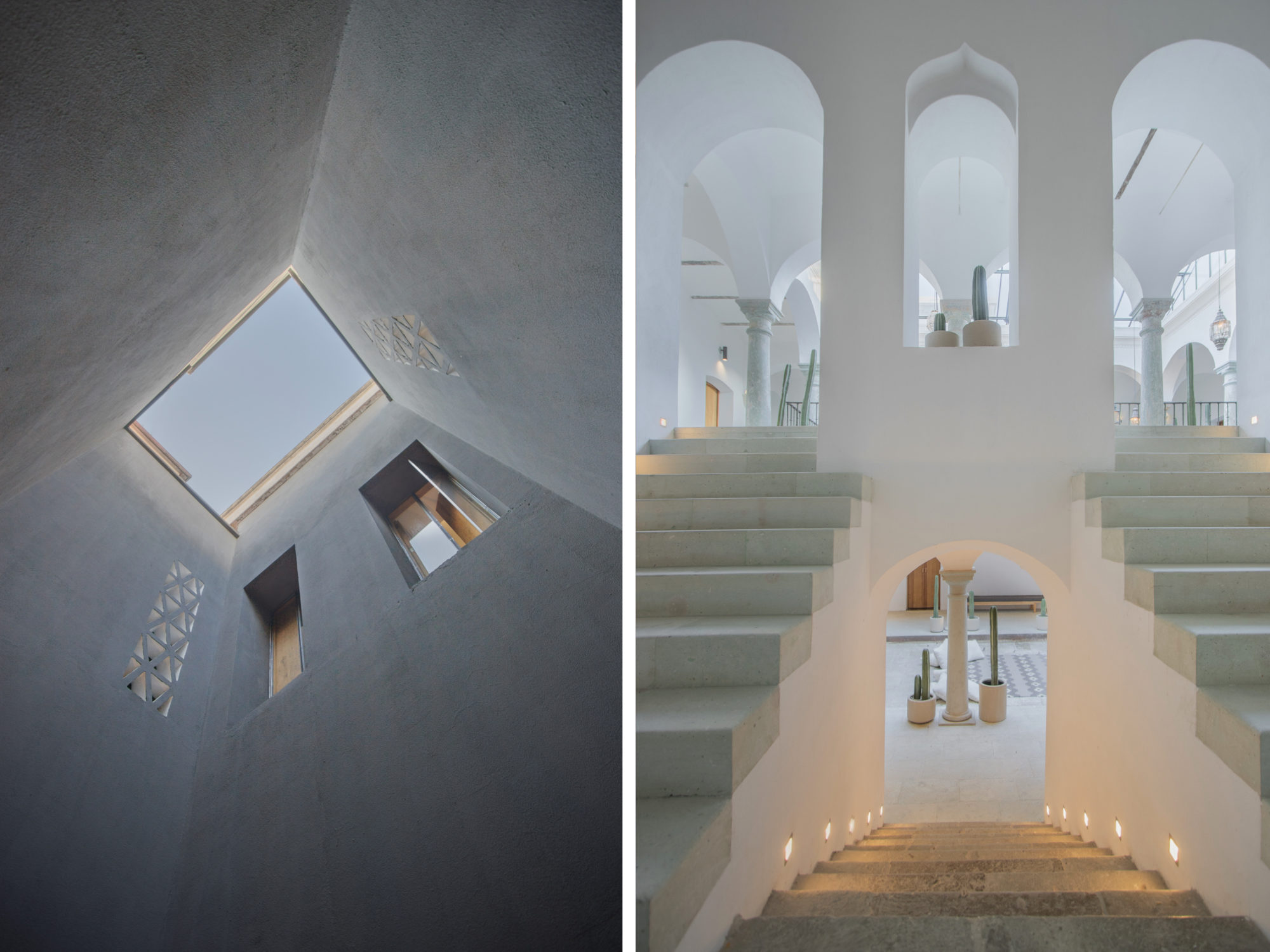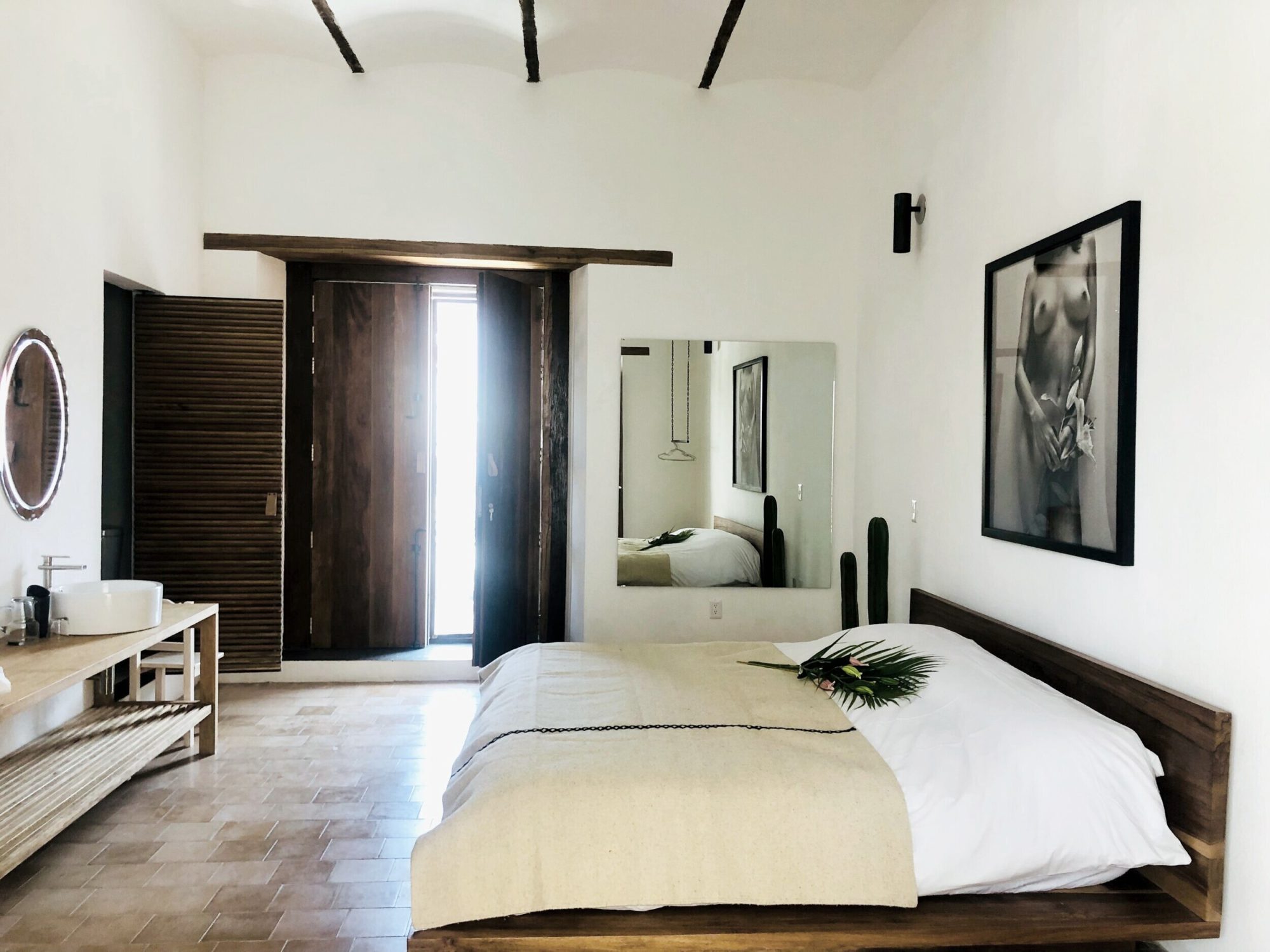“The experience will be at moments artful, unexpected, and somewhat theatrical,” says the artist Elliott Coon of Hotel Sin Nombre, a new property she launched with architect João Boto Caeiro near Oaxaca’s main central square. The 24-room hotel is a deft mixture of restrained interiors and bold flourishes that reflect the core principles of Gem&Bolt, the artisanal mezcal brand she co-founded. Like Hotel Sin Nombre itself, the spirit’s defining ingredient, damiana, a native shrub from the mint family, is designed to act as a natural antidepressant, heart opener, and aphrodisiac.
In Oaxaca, a Hotel With No Name
An artist-and-architect team turned to Mexican craftsmen when kitting out Hotel Sin Nombre, an urban hideaway with no brands and lots of mezcal.
By Nate Storey January 06, 2020


Behind a nondescript 17th-century facade scrupulously restored by Boto Caeiro, Hotel Sin Nombre is anchored by a central courtyard crowned with a soaring cupula that allows natural light to stream in. Potted cacti fringe the communal patio, which features Moroccan–style seating atop a wool Oaxacan rug adorned with clusters of hand-stitched pillows. There, guests enjoy breakfast, cocktails, rotating exhibitions and live performances by homegrown musicians. Other discoveries include Bibliotekita, a secret library under one of the limestone staircases that stocks a selection of vintage books, and chef Israel Loyola’s all-vegetarian interpretations of classic Oaxacan dishes at the restaurant.
The pared-down rooms, with their white walls and wooden platform beds designed by Coon, are a pleasing antidote to the modern trends of overwrought luxury. Robes are handmade and embroidered by a local artisan collective; locally sourced botanical shampoos, conditioners, and soaps are presented in humble amber glass bottles.

Despite its understated character, Hotel Sin Nombre was a complicated endeavor. It took Boto Caeiro more than four years to return the structure to its former glory. A dedicated proponent of vernacular design, he sought to maintain the original essence by using traditional materials such as clay, handmade bricks, limestone, and wood. Even the facade is coated in earth paint. “Limestone and earth create walls that can breathe and thus age well, both visually and structurally,” he says. Boto Caeiro’s interest in indigenous plants will soon be exhibited on the rooftop, which he plans to transform into a biosphere filled with species endemic to Oaxaca, as well as birds, butterflies, dragonflies, and more.
Heritage architecture isn’t the only aspect of the building’s legacy that lives on. Once a liquor factory in the 1960s and ‘70s, it now serves as a mecca for small-batch mezcals distilled with regional agave varieties that are served at the tucked-away bar. Conceived as a place to hide from the modern-day onslaught of brands and products, the hotel still proudly showcases Gem&Bolt’s smooth, smoky mezcal on the shelves of its low-lit bar. It’s an exception we can get behind.

(Photography: HS Fotógrafo)
